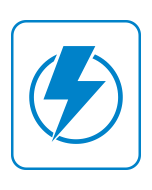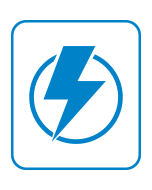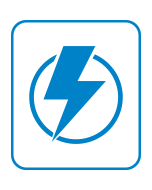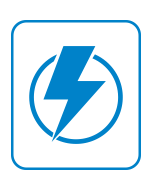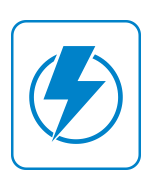European Demand Response (DR) Market, 2018–2025
Fluctuating Energy Demand and Accelerating Growth in Renewable Energy Sources (RES) Will Drive the Nascent European DR Market
27-Apr-2018
Europe
Market Research
$3,000.00
Special Price $2,250.00 save 25 %
Demand Response (DR) is a mechanism to alter changes in patterns in electricity consumption by consumers through pricing signals and incentives, thereby reducing peak demand and strengthening grid flexibility. DR covers intentional modifications on the customer’s electricity usage patterns via altering the time of use and duration of use. DR has traditionally been divided into price-based programs and incentive-based programs. DR is in its nascent stage in Europe with sporadic pilot programs underway in the residential sector. Experts opine that DR can achieve close to 40% of EU’s 2020 targets concerning energy savings and Carbon dioxide (CO2) emission reductions.
However, a deterrent for implementation is the development of infrastructure within Europe. Penetration of smart meters, which is a key enabler of DR, is still low, although it is accelerating. Although it does not have a direct impact on demand response, the potential still is inhibited, as only a small proportion of customers will have even base infrastructure. This is a high-growth opportunity market that will materialise steadily over the next decade. DR initiatives enable real-time analysis of customer demand trends and allow the generation, transmission, and distribution infrastructure to react accordingly. Growth in this market means that utilities will increasingly invest in innovative technologies and predictive tools to reduce power generation costs as well as grid failures and outages. New communication technologies and supportive government regulations are imperative for the integration of DR into the future energy system. This study provides a market analysis of the European demand response market.
The countries covered in the study include: Austria, Belgium, Bulgaria, Croatia, Republic of Cyprus, the Czech Republic, Denmark, Estonia, Finland, France, Germany, Greece, Hungary, Ireland, Italy, Latvia, Lithuania, Luxembourg, Malta, the Netherlands, Poland, Portugal, Romania, Slovakia, Slovenia, Spain, Sweden, Norway, Switzerland, Turkey, and the UK.
The market analysis includes revenue forecasts, discussion on the competitive structure, and market share analysis. The base year of the study is 2017 with forecast period from 2018 to 2025.
Key Issues Addressed
- What is demand response (DR)? How does it work? What are the benefits of DR?
- What are the key drivers and restraints influencing the European DR market? How do consumers participate in the DR market?
- Who are the aggregators? What is their role in the European DR market?
- Who are the players in the DR supply chain? How much will the European DR market be worth in 2025? Which areas will offer the best opportunities for growth?
- What is the current state of DR in key European countries? How it is projected to grow in the future across Europe?
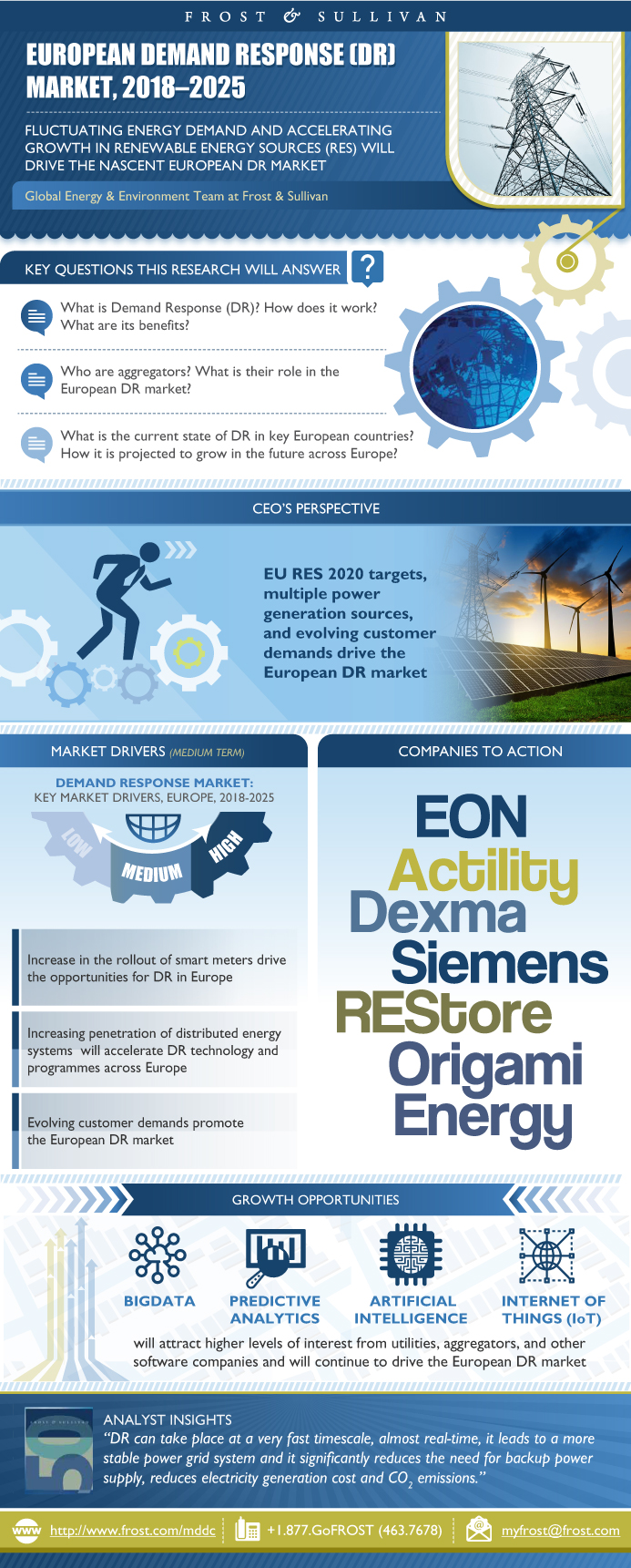
Key Findings
Key Findings (continued)
Key Trends That Would Drive the Growth of DR in Europe
Competitive Factors and Assessment
CEO’s Perspective
Energy Scenario Europe
So, What is Demand Response?
What are the Values/Services Provided by DR?
Classification of DR
How do Customers Participate in Demand Response?
Customer Segmentation
Aggregators
Aggregator’s Role
Value Chain for Demand Response
Key Trends that Would Drive the Growth of DR in Europe
DR Business Models
Market Definition
Market Overview—Specific Exclusions
Key Questions this Study will Answer
European DR Market Drivers
European DR Drivers Explained
European DR Drivers Explained (continued)
European DR Drivers Explained (continued)
European DR Drivers Explained (continued)
European DR Market Restraints
European DR Restraints Explained
European DR Restraints Explained (continued)
European DR Restraints Explained (continued)
European DR Restraints Explained (continued)
European DR Restraints Explained (continued)
Revenue Forecast—European DR Market
Revenue Forecast Discussion
Revenue Forecast by Country Discussion
European DR Market—Customer Segment Forecast Discussion
Current State of the European DR Market
The UK
France
Germany
Belgium
The Netherlands
Finland
Austria
Spain
DR Market Ecosystem
Competitive Factors and Assessment
DR Service Providers in Europe
Actility
Restore
Flexitricity
Origami Energy
E.ON Connecting Energies
Growth Opportunity 1—IoT-enabled Building Services
Growth Opportunity 2—Data Analytics and Cloud
Growth Opportunity 3—Business Models
Strategic Imperatives for Success and Growth
The Last Word—3 Big Predictions
Legal Disclaimer
List of Exhibits
List of Exhibits (continued)
The Frost & Sullivan Story
Value Proposition: Future of Your Company & Career
Global Perspective
Industry Convergence
360º Research Perspective
Implementation Excellence
Our Blue Ocean Strategy
Purchase includes:
- Report download
- Growth Dialog™ with our experts
Growth Dialog™
A tailored session with you where we identify the:- Strategic Imperatives
- Growth Opportunities
- Best Practices
- Companies to Action
Impacting your company's future growth potential.
| Deliverable Type | Market Research |
|---|---|
| No Index | No |
| Podcast | No |
| Author | Swagath Navin Manohar |
| Industries | Energy |
| WIP Number | MDDC-01-00-00-00 |
| Keyword 1 | Demand Response |
| Is Prebook | No |
| GPS Codes | 9301-A4,9597,9852 |

